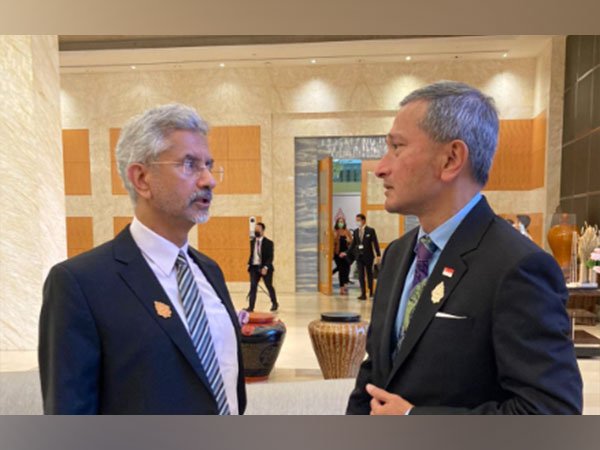The Indian government’s progressive decision to open the Advanced Medium Combat Aircraft (AMCA) program to private sector participation marks a watershed event in the country’s defense industrial landscape.
Defence Secretary Rajesh Kumar Singh’s announcement following a critical meeting of the Aeronautical Development Agency (ADA) in Bengaluru marks a significant move toward developing a competitive ecosystem for India’s most ambitious domestic fifth-generation fighter jet program.
The AMCA signifies India’s ambitious entry into the exclusive club of countries with fifth-generation stealth aircraft capabilities. Currently, only the United States (F-22 Raptor and F-35 Lightning-II), China (J-20 Mighty Dragon), and Russia (Su-57) have active fifth-generation fighters. The AMCA is a 25-tonne, twin-engine, all-weather stealth multi-role combat aircraft for the Indian Air Force and Navy.
The Cabinet Committee on Security, led by Prime Minister Narendra Modi, approved the project in March 2024, with an estimated development cost of ₹15,000 crore. The aircraft is capable of performing a variety of missions, including air superiority, ground strikes, suppression of enemy air defences (SEAD), and electronic warfare activities.
The most groundbreaking component of the AMCA program is its competitive execution mechanism, which was approved by Defence Minister Rajnath Singh on May 27, 2025. This strategy radically transforms India’s defense procurement landscape by abandoning the long-standing practice of automatically awarding fighter jet manufacture contracts to state-owned Hindustan Aeronautics Limited (HAL).
The new framework allows both commercial and public sector companies to bid for the AMCA prototype development contract separately, as joint ventures, or as consortia. This strategy ensures equal possibilities for all qualifying Indian enterprises, a substantial break from the nomination-based system that traditionally favored HAL.
The private sector has eagerly embraced the AMCA execution paradigm, recognizing the unprecedented chance to participate in India’s most significant combat aircraft program. TATA Advanced Systems Limited, Larsen & Toubro, Adani Defence and Aerospace, Mahindra Group, and Bharat Forge are among the major private sector businesses who are likely to participate.
These organizations offer a wide range of competencies, including sophisticated manufacturing and precise engineering, as well as systems integration and supply chain management. The program offers chances in a variety of fields, including stealth technologies, AI-powered avionics, propulsion systems, smart weapons integration, electronic warfare systems, and sophisticated materials.
While the new approach encourages competition, Defence Secretary Singh recognizes that HAL has inherent advantages in obtaining the prototype development tender. HAL has considerable expertise manufacturing the TEJAS Light Combat Aircraft, handling complex aerospace projects, and maintaining long-standing ties with defence organisations.
HAL has already received 24 answers from indigenous enterprises looking to join consortiums, establishing itself as the primary integrator for future alliances. However, private companies have expressed worries about the eligibility standards, which may favour HAL, such as onerous financial requirements and ownership limits.
Defence Secretary Rajesh Kumar Singh’s pledge to lower entry barriers for private enterprises is a proactive step toward encouraging competition. The government acknowledges the necessity for at least two aircraft manufacturers in India to build a strong aerospace ecosystem and minimize reliance on imports.
This approach entails offering targeted assistance to new entrants and building an enabling environment that encourages private sector engagement while preserving quality and security standards. The strategy attempts to capitalize on India’s expanding aerospace capabilities while ensuring the program’s success within the ambitious timeframe.
The AMCA program has a structured development timeline with well-defined milestones. The first prototype is projected to be ready by 2028-29, with the first flight planned for 2029. The whole development process is expected to be completed by 2034, with series manufacturing beginning in 2035.
The program will begin with five prototypes, followed by full-scale production to meet the Indian Air Force’s need for seven squadrons (about 126 aircraft). The aircraft will be built in two versions: the AMCA MK-1, which will be driven by GE F414 engines, and the AMCA MK-2, which will be powered by locally designed 110kN engines.
The AMCA program’s competitive methodology has far-reaching ramifications for India’s defense industrial environment. It represents a national approach to strengthening key defense capabilities while promoting innovation and industrial growth. The program’s success might position India as a major player in the global aerospace sector, increasing its strategic autonomy.
The plan also addresses the Indian Air Force’s acute squadron shortfall, with 31 squadrons now operating against an authorized strength of 42. The AMCA would supplement existing platforms such as the TEJAS and Rafale, while also giving India with cutting-edge fifth-generation capabilities to combat regional threats.
The government’s willingness to lower entrance hurdles for private enterprises in the AMCA program marks a game-changing approach to India’s defense manufacturing strategy. The program seeks to leverage the best of both public and private sector talents by creating a competitive environment while recognizing HAL’s natural advantages.
This balanced approach, combined with Defence Secretary Singh’s commitment to offering targeted assistance to new entrants, prepares India to successfully construct its first indigenous fifth-generation fighter while also establishing a strong aerospace industrial ecosystem for the future.
The success of the AMCA program will be dependent on good collaboration between established actors such as HAL and rising private sector capabilities, backed up by government actions to provide an enabling environment for all stakeholders. This comprehensive approach promises to accelerate India’s journey toward aerospace self-reliance while maintaining the highest standards of quality and performance in one of the world’s most technologically demanding sectors.


